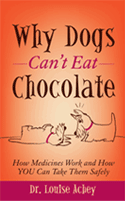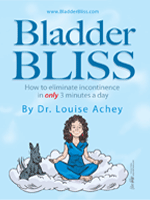Archive for December, 2016
December 19th, 2016. Filed Under:
consumer information,
medicines,
patient information,
side effects.
Tags:
Colace®,
docusate,
emollient,
laxative,
mineral oil,
Peri-Colace®,
Senakot®,
stool softenerQ: What’s the difference between a stool softener and a laxative?
A laxative encourages movement of the stool and assists you in eliminating feces. The word laxative means “to loosen” and is related to the word “lax” which means loose or relaxed. A laxative works to “loosen” your bowels and relieve constipation. Stool softeners are actually considered a type of laxative called emollient laxatives.
When you become constipated, it’s often because the muscles of your intestines are not moving as well as they should, slowing down the removal of your feces. The longer it takes your feces to move from your small intestine to your rectum the more water gets pulled out of it along the way, making your stool smaller, harder and more painful to eliminate. An emollient is a substance that works by softening or increasing moisture. Two types of stool softeners that work as emollient laxatives are docusate and mineral oil.
Docusate is a surfactant that acts just like a detergent or soap. Like detergents, docusate decreases the surface tension of water and helps it move water into your stool. Although docusate doesn’t directly stimulate the muscles of your intestines or the movement of stool, it can help avoid and relieve constipation by counteracting how much water your stool loses as it moves through your intestine. Docusate is usually easy to tolerate but may occasionally cause diarrhea or stomach cramps. Unlike mineral oil, it doesn’t interfere with absorption of nutrients or any vitamins.
You’ll find docusate more effective as a preventative than as a laxative because it works more slowly. You should allow 12 to 72 hours for it to work. Most of the time it will give you results within 2 days but can take up to five days for full effect. It’s often combined with a stimulating laxative for a faster effect.
The other emollient laxative is mineral oil. Mineral oil is a liquid that helps to soften the stool but doesn’t change the amount of water in it like docusate does. Mineral oil is not as safe to use as docusate because if you aspirate or inhale it by accident it can cause life-threatening irritation to your lungs called aspiration pneumonitis. Mineral oil interferes with absorption of fat-soluble vitamins like vitamin A, D, E and K, and can cause oily leakage out of the rectum. Avoid taking docusate along with mineral oil as a laxative. Docusate will help mineral oil get absorbed into your body instead of staying in your intestines, where it needs to be to work.
5 Tips for Using Docusate Successfully as a Stool Softener:
- Increase your water and fluid intake when taking docusate; this will increase its effectiveness. Because docusate works by helping move water into your stool, drinking more fluids help it do its job better.
- If you are on a sodium-restricted diet, look for the calcium form of docusate instead of the more common sodium formulation. Docusate calcium comes as a 240mg capsule instead of 250mg, like docusate. It’s sometimes hard to find; if you don’t see the calcium form of docusate on the shelf, ask your pharmacist.
- Docusate sodium comes as liquid-filled capsules in two sizes: a 100 mg size and a much bigger 250 mg size. If you have any trouble swallowing capsules, you should select the 100 mg capsules, but because the 100 mg and the 250 mg are usually about the same price, the 250mg capsules are a better value.
- Although I have seen root beer flavored mineral oil, most mineral oil is bland tasting. Docusate is not bland. It tastes just like soap! Avoid biting or cutting docusate capsules unless you like the taste of your mother washing your mouth out with soap. The syrup is nearly as bad; it ranks consistently at the bottom of our liquid taste tests and the soapy taste can linger for hours.
- If you need a faster result, combine docusate with a more stimulating laxative like senna or bisacodyl. Senakot-S® and Peri-Colace® are examples of combination products.
Leave a Comment
Q: My husband takes a thyroid medicine called levothyroxine. He went to his doctor last week because he’d been feeling tired and the doctor told him it’s because he’s taking his thyroid pills wrong. All these years he’s taken it with his other morning pills at breakfast, but now he’s supposed to take it 30 minutes BEFORE his breakfast instead. He’s tried to make the switch but it’s really hard for him to remember to take it first thing in the morning. Is there anything we can do?
Levothyroxine is a very potent medicine; even small changes in the dose can create big differences in how much energy you have. How much levothyroxine you need can depend not only on how much medicine is prescribed by your doctor, but also on HOW you take those pills. Your husband may not be getting the entire dose of his thyroid medicine because food can interfere with the ability of levothyroxine to get into your body.
Like most medicines, in order to do its job levothyroxine must first get into your body. It needs to jump from a pill sitting in an amber prescription bottle all the way into your thyroid gland, where it works to support your metabolism and give you energy.
When you swallow a pill it doesn’t magically dissolve in your stomach and do its thing right then and there. Most medicines need to get into your bloodstream first before they can get to where they need to go and do what they are supposed to do. Although your pills dissolve in your stomach they can’t jump into your body from there. Instead, medicines and nutrients have to leave your stomach and move into your small intestine before they can be launched into your body.
Your small intestine is a busy place. Its walls are covered with blood vessels and specialized cells designed to transport nutrients and medicines into your bloodstream, where they get carried on throughout your body and delivered to where they need to be, like levothyroxine going to your thyroid gland.
The process of medicine going from a pill you swallow to entering your bloodstream is called absorption. Some medicines are better at being absorbed than others. While many medicines are completely absorbed after you take them, other medicines like levothyroxine can run into trouble along the way, resulting in less of it getting into your body and doing its job.
Your husband will get more consistent results from taking his levothyroxine on an empty stomach because food and certain minerals can attach themselves to it and prevent it from making the trip through the wall of his small intestine into his bloodstream and on to his thyroid gland.
But the most important thing of all is taking it consistently, every day, the same way. His doctor will use blood tests to adjust his levothyroxine dose if he needs more.
Here Are 5 Tips For Best Results When Taking Levothyroxine:
- Levothyroxine is absorbed best on an empty stomach, either AT LEAST 30 minutes before a meal OR 3-4 hours after you’ve finished eating.
- If you have trouble remembering to take your levothyroxine first thing in the morning, try taking it at bedtime instead, as long as it’s been at least 3 hours since your evening meal. Taking it at bedtime may be easier to remember than taking it all by itself in the morning, especially if you take other medicines at the same time.
- If you forget to take your levothyroxine before breakfast, go ahead and take it anyway. Don’t worry, your stomach is not going to blow up, your intestines are not going to fall apart and your thyroid is not going to die. If you take levothyroxine with your meal you may not absorb the whole dose but if you skip entirely it you won’t get ANY of it absorbed! And that’s worse.
- If trying to take levothyroxine on an empty stomach is too complicated to do, don’t panic. It’s perfectly okay to take levothyroxine with your breakfast or other meal, as long as you take it that way all the time. Many patients are perfectly successful taking levothyroxine because they ALWAYS take it with their breakfast and don’t skip any doses.
- If you take calcium or iron supplements, don’t take them at the same time as levothyroxine. These minerals can significantly reduce the amount of levothyroxine that you absorb, so it’s best to separate them by at least 3-4 hours.
Leave a Comment
Q: I’ve taken Aleve® or Motrin® for years for my bad knee, but now my stomach burns whenever I take them. My doctor tried me on Celebrex®, which didn’t burn my stomach but didn’t work for me. I’ve already tried Icy-Hot® and capsaicin but they burn my skin. Are there any other creams that could help my joint pain?
Yes. Motrin®, also called ibuprofen, is related to Aleve® (naproxen) and Celebrex® (celecoxib) which are Non-Steroidal Anti-inflammatory Agents, or NSAIDs. In the United States most people take NSAIDs by mouth as tablets, but in the UK and Europe they have used NSAID creams, gels, ointments and sprays for many years.
NSAIDs are very good at treating most types of swelling and pain, whether from a sudden injury like a muscle sprain or strain or a chronic inflammation such as arthritis. Using an NSAID cream or gel directly to your sore muscle or joint can relieve pain and inflammation without the side effects that NSAIDs often cause, like stomach burning, stomach pain, kidney or heart problems. For people who take a blood thinner, using a topical form of NSAID helps avoid an increased risk of bleeding.
You are not alone in noticing side effects from taking an oral NSAID like Aleve® or Motrin®. Many Americans with ulcers, kidney or heart problems could benefit from using an NSAID instead of a dangerous narcotic pain reliever. Sadly, diclofenac is the only commercially available topical NSAID in the United States and it requires a doctor’s visit for a prescription.
With so many other NSAIDs available, why is diclofenac the only one marketed in United States as a cream, gel or spray? I suspect the pharmaceutical companies haven’t bothered to develop or market topical versions of their NSAIDs in America because there’s not enough patent protection to make it profitable.
Another roadblock to the availability of topical forms of NSAIDs is whether it can penetrate the skin. Grinding a medicine up into powder and adding it to a cream or ointment doesn’t guarantee that enough of it will merrily move through the skin to cause a measurable decrease in pain. In some cases, the drug company has decided that the topical version of their NSAID medicine isn’t effective enough to justify the huge investment needed to pursue approval from the Food and Drug Administration (FDA).
Some topical NSAIDs have been shown to ease the acute pain of sprains and strains as well as the chronic pain of osteoarthritis. In September 2012 the Cochran Institute published a review of multiple studies called a meta-analysis on this topic, called Topical NSAIDs for chronic musculoskeletal pain in adults. They collected and evaluated lots of studies done with topical NSAIDs, many of them unpublished work from the files of drug companies. Two NSAIDs stood out as effective in chronic musculoskeletal pain: diclofenac and ibuprofen. Not only that, but diclofenac was shown to be just as effective applied to the skin as in a pill form, and with minimal side effects. Both ibuprofen and diclofenac gel are available without a prescription in the UK and Europe.
While visiting Germany a couple of years ago, I saw Voltaren® gel advertised in the windows of several Apotheks (German pharmacies). The day before we flew home I stopped at a busy Apothek to see if I could purchase some Voltaren®. Pointing at the boxes of gel displayed in their window, I rubbed my elbow and stammered, “Voltaren®, bitte?”
With our daughter Maureen translating, I discovered from the German pharmacist that generic ibuprofen gel had been available in Germany for over 10 years, and neither it nor the Voltaren® gel in the window required a prescription. I walked out triumphantly clutching a tube of each. Too bad the patient information leaflet inside the box was only printed in German.
You can get topical diclofenac in the U.S. in several formulations and brand names, but it is expensive and available only by prescription. Diclofenac comes as Voltaren® 1% gel, applied 4 times daily; Pennsaid® 1.5% solution, applied 3-4 times daily; Pennsaid® 2% solution in a pump applied twice daily; and Flector® 1.3% as a patch applied twice daily. It’s also available as Solaraze® 3% gel for rosacea.
Now, here’s some good news: Voltaren® gel is now available as a generic! This usually means it costs less and will be added to most prescription insurance plans. Check with your doctor for a prescription for generic Voltaren® (diclofenac) 1% gel for your knee pain.
Leave a Comment



